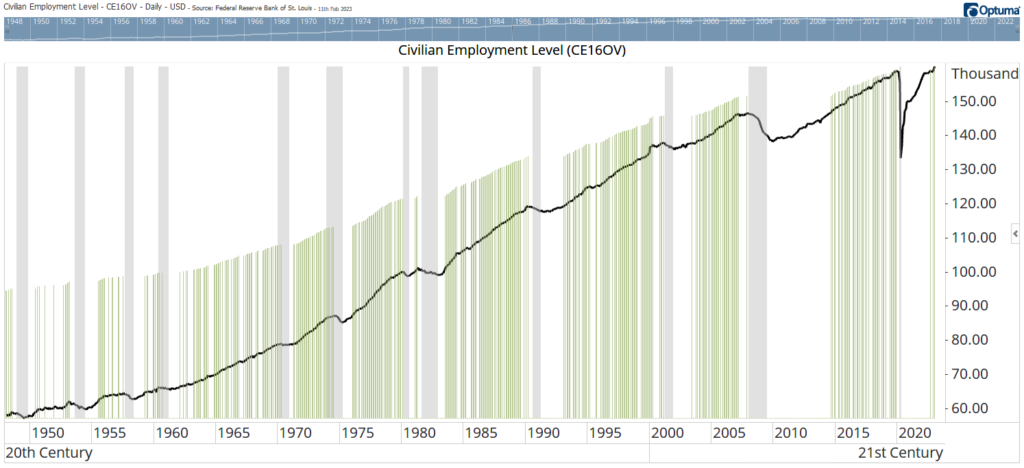Much is being made of the latest jobs data.
The January employment report showed the economy created 517,000 new jobs in the first month of the year. This was almost three times more than the 187,000 jobs that analysts expected.
The unemployment rate fell to 3.4%, also significantly better than expectations of 3.6%. That’s the lowest jobless level since May 1969.
That news followed the Job Openings and Labor Turnover Summary that reported 11 million job openings in December. This indicates there are about 1.9 openings for every unemployed person.
JOLTS also reported unusually low unemployment.
Many pundits pointed to the data as evidence that the economy can avoid a recession. Unfortunately, the numbers don’t line up.
The chart below shows that the jobs market is always strong when a recession starts. This chart shows the employment level, aka the number of people with jobs. Grey bars indicate recessions. Green bars show new highs in the data.

There are always a record number of jobs before recessions start.
In the 1960s and 1970s, employment continued growing for a few months into the recession. Since then, the number of jobs peaked less than six months before another recession began.
Is Unemployment a Good Economic Indicator?
Employment is a lagging indicator of the economy. Most companies hire based on current market conditions. If they need help, they hire because they know can lay employees off when the economy weakens.
Until weakness is widespread, companies have no incentive to reduce hiring. After all, as the pundits are telling us, it’s possible the economy can avoid a recession. If that happens, companies that stop hiring too soon will miss out on opportunities.
That’s why employment isn’t used to forecast recessions. Economists instead look at the yield curve and new orders for manufacturers, which are all showing weakness.
Bottom Line: Smart money is still betting on a recession. Record-low unemployment is consistent with that.
Michael Carr, CMT, CFTe is the editor of two investment trading services — One Trade and Precision Profits — and a contributing editor to The Banyan Edge. He teaches Technical Analysis and Quantitative Technical Analysis at the New York Institute of Finance. Follow him on Twitter @MichaelCarrGuru.





